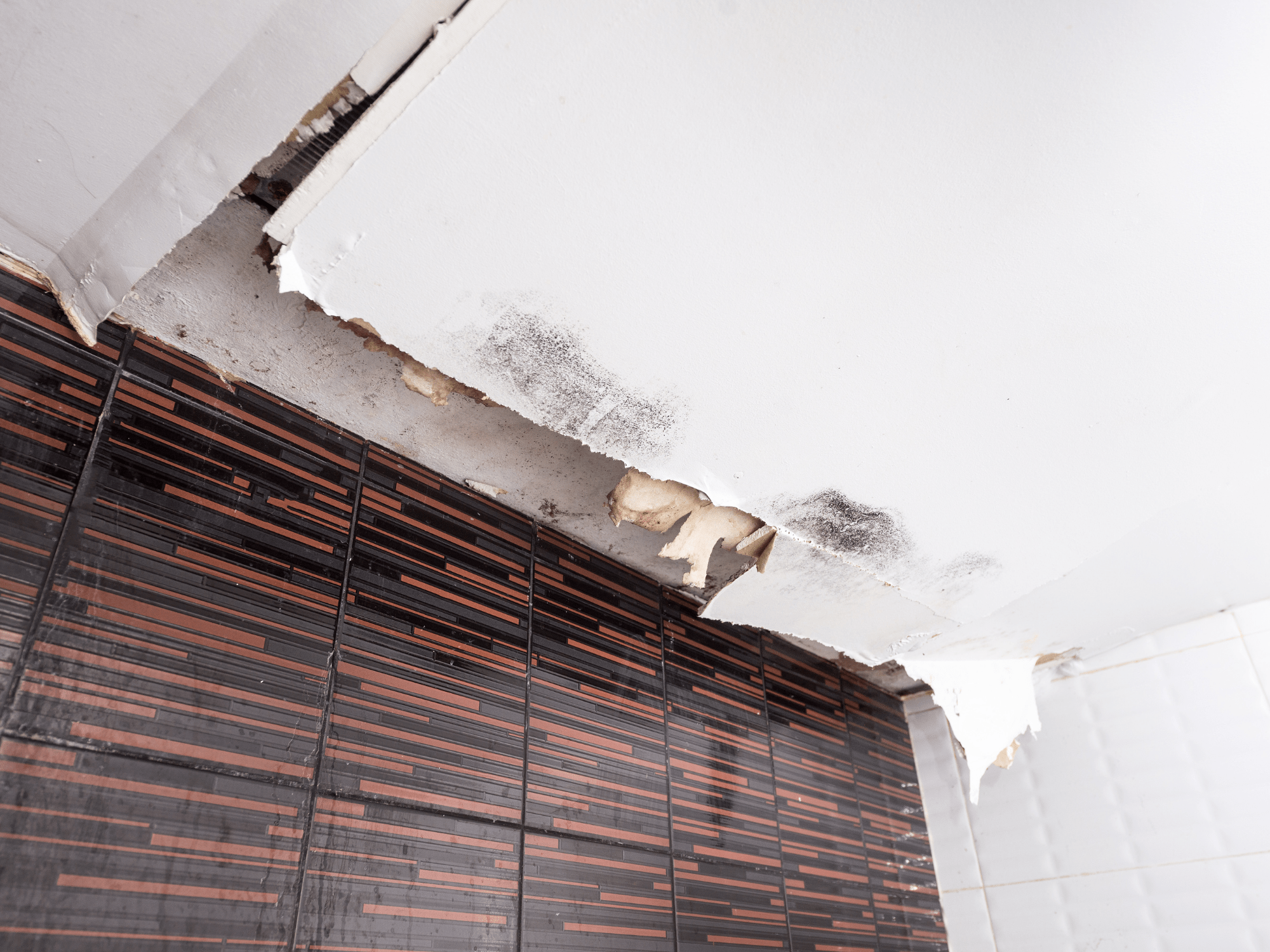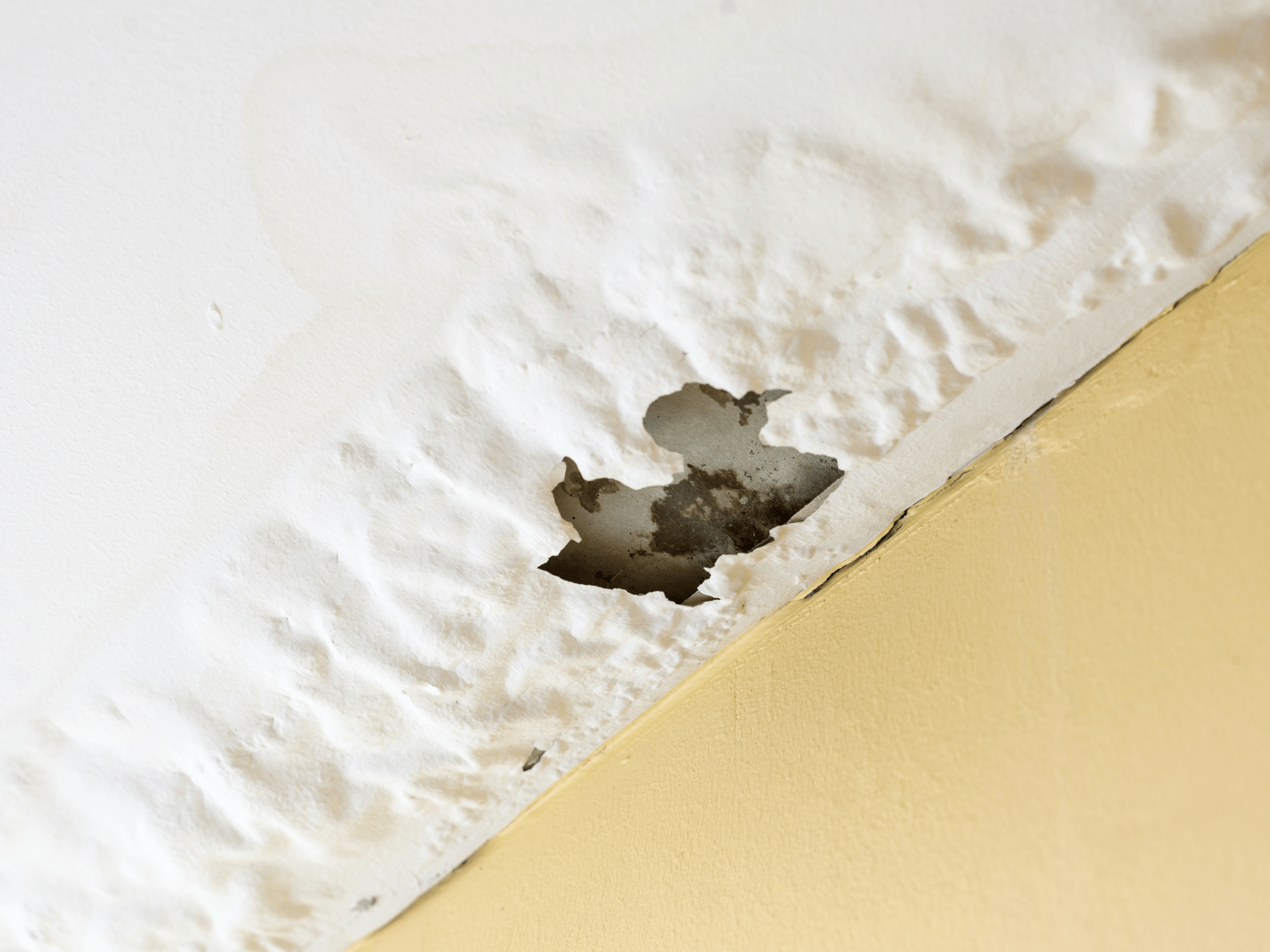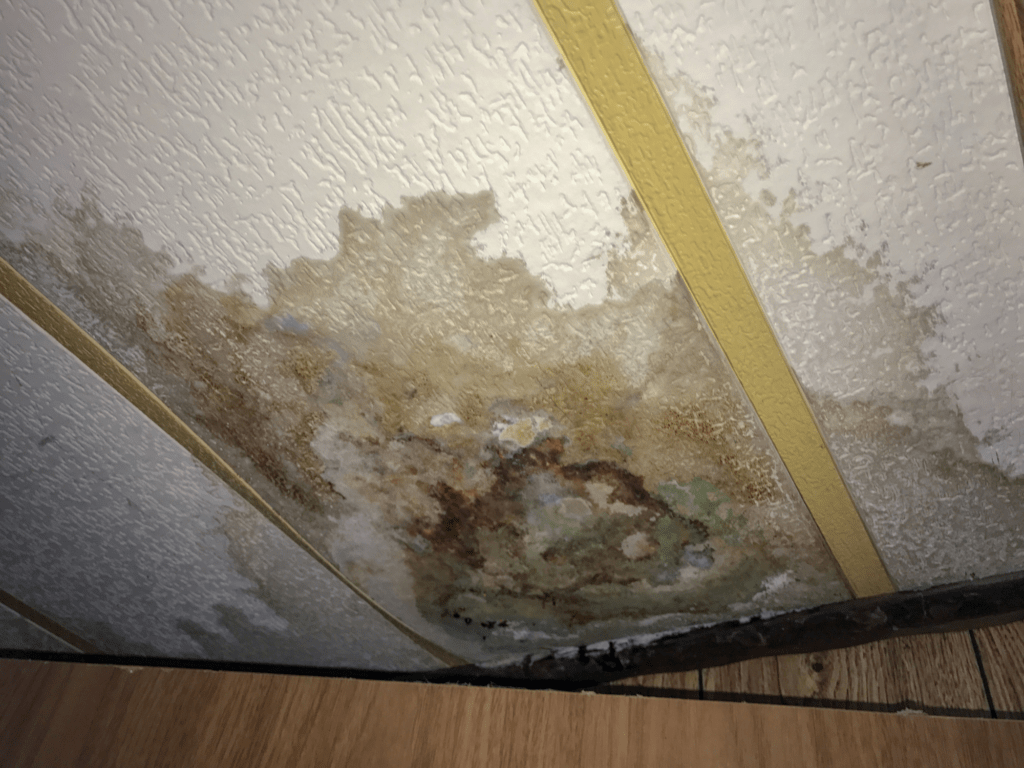Water damage to the ceiling is a common occurrence, but catching it as soon as possible can be tricky! No matter how old the structure is, homes can experience water damage from leaky or burst pipes, overflowing toilets or bathtubs, and leaks in the roof. Any water that leaks down onto the ceiling material will cause harm that, in the long run, will become an extensive problem. How can you find water damage on your ceiling?
What To Look For With Ceiling Water Damage
 Once you know what to look for, water damage on the ceiling can be easy to find. Some of the ordinary markers include:
Once you know what to look for, water damage on the ceiling can be easy to find. Some of the ordinary markers include:
- Discoloured spots that are yellow, brown, or orange. Ceilings that are bright white can start to show signs of discoloration.
- Cracks in the ceiling. Full-length cracks are a sign that your home is settling improperly.
- Sagging or bulging drywall. If you notice your ceiling is bowing, the joists may not be stable enough to support the waterlogged material.
- Paint, wallpaper, or vermiculite that’s peeling or bubbling. If you haven’t redone the walls in decades, peeling paint or wallpaper is a sign of too much moisture on the ceiling.
Any of these indicate a likely moisture problem that could be much more widespread than the visible damage leads you to believe. For example, a slow leak causing a yellowish-brown stain on your ceiling could be a sign of mould behind the drywall; large leaks and burst pipes will also cause the ceiling material to crumble. If you catch these problems in a ceiling in your home, an expert from a professional restoration company is the best person to assess the extent of the damage.
Where In The Home Is The Ceiling Damage?
 If you’re seeing water damage on the ceiling of a room that’s below another floor, the issue is likely an internal leak. The common cause is the bathroom, and if this room is above the ceiling with damage, you may be dealing with worn-out waterproofing, spillover from a damp floor, or a leaky or burst pipe. Consider whether there are any appliances above the ceiling. An old refrigerator, washing machine, or dishwasher may be leaking and need to be looked at by a technician. Pipes can also burst due to freezing temperatures, and if you’re in Toronto, London or a surrounding community, you know this happens regularly! Emergency Flood Response is ready 24/7 for all emergencies in Southwestern, Ontario. If the damage is on the top floor, the likely culprit is an old or damaged roof. If you’ve lost shingles or experienced problems in a recent windstorm, or you don’t know the last time you had a check-up, fixing the roof will be the path to follow. On the other hand, your roof may be fine; the water might be from clogged gutters or ice dams that are breaking shingles, compromising the flashing, and causing water to seep into your home.
If you’re seeing water damage on the ceiling of a room that’s below another floor, the issue is likely an internal leak. The common cause is the bathroom, and if this room is above the ceiling with damage, you may be dealing with worn-out waterproofing, spillover from a damp floor, or a leaky or burst pipe. Consider whether there are any appliances above the ceiling. An old refrigerator, washing machine, or dishwasher may be leaking and need to be looked at by a technician. Pipes can also burst due to freezing temperatures, and if you’re in Toronto, London or a surrounding community, you know this happens regularly! Emergency Flood Response is ready 24/7 for all emergencies in Southwestern, Ontario. If the damage is on the top floor, the likely culprit is an old or damaged roof. If you’ve lost shingles or experienced problems in a recent windstorm, or you don’t know the last time you had a check-up, fixing the roof will be the path to follow. On the other hand, your roof may be fine; the water might be from clogged gutters or ice dams that are breaking shingles, compromising the flashing, and causing water to seep into your home.

